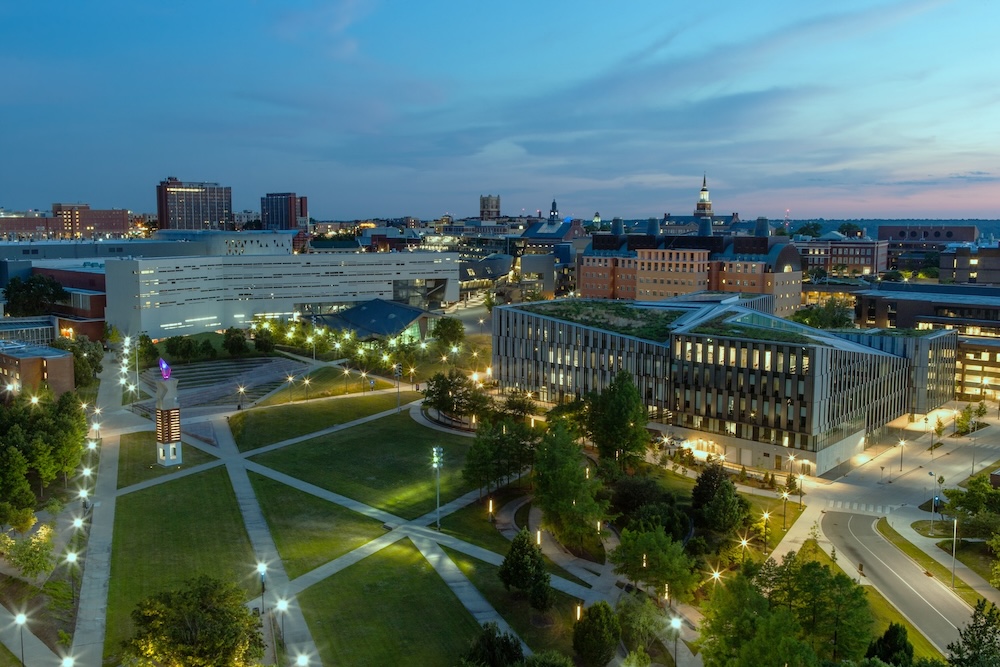Astrophysicists don’t need to use a supercomputer to create models of star formation—but it can certainly help teach the concept to college students.
Matthew Bayliss, an assistant professor of physics at the University of Cincinnati, has been using the Ohio Supercomputer Center (OSC) for several years to teach undergraduate and graduate students about star structure and evolution in the universe. The work of understanding these celestial objects requires quite a bit of computation. While students could puzzle through such equations on a whiteboard or on a personal laptop, Bayliss has found that using OSC’s classroom resources is an easy and effective approach.
“OSC is nice because it provides a uniform interactive system for the students,” Bayliss said. “If you have a working web browser, you can run Jupyter notebooks off the OSC system. You don’t have to worry about individual access and computer setups.”

When Bayliss first started teaching the astrophysics course, he initially asked students to install a python environment on their personal computers to perform calculations. But he wound up managing too many tech support requests due to the students’ different operating systems. A fellow faculty member pointed Bayliss to OSC, a division of the Ohio Department of Higher Education, as an alternative.
In addition to offering students a consistent learning platform, OSC allows the professor to store and access files relevant to the class in one spot and provides quick support when needed, Bayliss said. OSC’s open-source portal, Open OnDemand, offers easy access to the Center’s resources from any device. The students have enjoyed using OSC and the opportunity to engage in hands-on experimentation that complements course lectures, Bayliss said.
In the astrophysics course, Bayliss assigns the students different star models to explore and teaches them how to measure star emission spectra with telescopes. Students create simulations of stars and compare these synthetic models to published data in the scientific literature. The class serves as a foundation for learning other astrophysics topics, such as star evolution and star remnant systems such as black holes.
For both undergraduate and graduate students, the course may be their first opportunity to use high performance computing (HPC) to study and solve scientific problems. It’s a good experience for students who may need to use HPC resources as they delve further into physics research, Bayliss said.
Bayliss sees potential in expanding his use of OSC for additional classroom assignments that use research codes that would be too computationally intensive to perform efficiently without HPC resources.
“Responsiveness of the OSC support staff has been very helpful,” Bayliss said. “It’s the reason I use OSC year after year—it’s a known quantity and I know it will work.”
The Ohio Supercomputer Center (OSC) addresses the rising computational demands of academic and industrial research communities by providing a robust shared infrastructure and proven expertise in advanced modeling, simulation and analysis. OSC empowers scientists with the services essential to making extraordinary discoveries and innovations, partners with businesses and industry to leverage computational science as a competitive force in the global knowledge economy and leads efforts to equip the workforce with the key technology skills required for 21st century jobs.